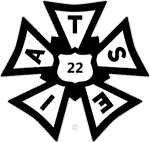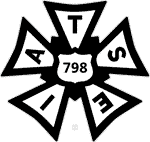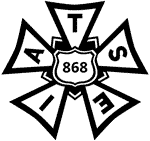National Symphony Orchestra
Noseda and NSO Soloists
Concert Hall
Join us for a surprise program—curated and conducted by NSO Music Director Gianandrea Noseda with audience participation—showcasing several members of the NSO as soloists. This concert will be recorded and broadcast on the Kennedy Center’s Digital Stage+ platform.
Jun. 3, 2021
Event Information
-
Genre
Music
Program
Intermission
Artists
Notes on the Program
Serenade for Orchestra (1957)
William Grant Still
Born May 11, 1895 in Woodville, Mississippi.
Died December 3, 1978 in Los Angeles.
William Grant Still was born in Woodville, Mississippi, where his father was town bandmaster. At sixteen, Still matriculated as a medical student at Wilberforce University in Ohio, but soon switched to music and graduated in 1915; two years he later entered Oberlin College. In 1921, he moved to New York as oboist with the orchestra of the Noble Sissle–Eubie Blake revue Shuffle Along. There he studied with Varèse, ran Black Swan Records, and in 1928 received the Harmon Award for that year’s most significant contribution to Black culture in America. While continuing to compose large-scale classical pieces, Still also wrote and arranged for radio, Broadway shows and Paul Whiteman, Artie Shaw and other popular bandleaders. After moving to Los Angeles in 1934, he arranged for films (Lost Horizon) and television (Gunsmoke, Perry Mason). Still continued to hold an important place in American music until his death in 1978.
Duet-Concertino for Clarinet and Bassoon with String Orchestra and Harp (1947)
Richard Strauss
Born June 11, 1864 in Munich.
Died September 8, 1949 in Garmisch-Partenkirchen.
Strauss largely withdrew from public life after 1935 to his villa at Garmisch-Partenkirchen in the Bavarian Alps. He lived there throughout World War II, spared the physical ravages of the conflict, but deeply wounded by the loss of many friends and the bombing of Dresden, Munich and Vienna. In October 1945, under the threat of being called before the Denazification Board, he moved to Switzerland, where he lived for the next four years. Strauss and his wife, Pauline, stayed in various hotels in Lugano and Pontresina (her tantrums and complaints led to frequent management requests for them to seek lodgings elsewhere) before settling into the Palace Hotel in Montreux. Strauss was cleared by the Board in June 1948, but chose to stay in Switzerland for medical treatment that winter, returning to Garmisch in May 1949, just four months before his death. Though increasingly feeble during his Swiss sojourn, his mind was clear and he continued to compose. The Duet-Concertino was written late in 1947 for the chamber orchestra of Radio Lugano.
Lyric for Strings (1946)
George Walker
Born June 27, 1922 in Washington, D.C.
Died August 23, 2018 in Montclair, New Jersey.
George Walker was the son of a Jamaican immigrant father who worked his way through Temple University Medical School to become a physician and a musical mother who introduced her son to the piano at age five. George gave his first public recital at Howard University when he was fourteen, and attended Oberlin College on a full scholarship; he graduated at age eighteen with highest honors in his class. Advanced study at the renowned Curtis Institute in Philadelphia followed and in 1945 he became the school’s first Black graduate to receive Artist Diplomas in both piano and composition. Further piano study in France in 1947 helped prepare him for several years as a touring virtuoso in Europe and America. Walker taught at Dillard University in New Orleans in 1954-1955 before completing his doctoral degree after just one year at the Eastman School in Rochester, and was thereafter on the faculties of several noted colleges, conservatories and universities. He was honored with a Pulitzer Prize, induction into the American Classical Music Hall of Fame, and seven honorary doctorates.
Elegy No. 1 in D major for Bass and Strings (1870)
Giovanni Bottesini
Born December 24, 1821 in Crema, Italy.
Died July 7, 1889 in Parma.
Giovanni Bottesini, composer, conductor and the preeminent double bass virtuoso of the mid-19th century, was born in 1821 in northern Italy. His father, Pietro, a clarinetist and composer, early taught his son the rudiments of music, and before he was eleven, young Giovanni had sung in several choirs, played timpani in the local theater orchestra, and studied violin. Bottesini’s father took his precocious son to Milan in 1835 with hope of enrolling him in the Conservatory, but they learned upon their arrival that scholarships remained only for players of bassoon and double bass. Giovanni applied himself with such vigor to the latter instrument that he was accepted into the school only a few weeks later. He left the Conservatory after four years of study with a graduation prize for his solo playing. With his winnings, Bottesini purchased a fine instrument made by the old Milanese master Giuseppe Testore that, legend has it, the young musician found beneath a pile of rubbish in a puppet theater.
Serenade for Strings, Op. 1 (1928 for string quartet, arranged for string orchestra in 1943)
Samuel Barber
Born March 9, 1910 in West Chester, Pennsylvania.
Died January 23, 1981 in New York City.
In 1924, at the age of fourteen, Samuel Barber entered the inaugural class of Philadelphia’s Curtis Institute of Music. He first studied piano (with Isabelle Vengerova), and in successive years added lessons in composition (Rosario Scalero), voice (Emilio de Gogorza) and conducting (Fritz Reiner), eliciting the highest praise from his instructors for his musical gifts and his keen intelligence. In 1928, when he was just eighteen and after only two years of study with Scalero, Barber composed a Serenade for String Quartet, which he deemed significant enough to christen as his Op. 1. Soon after completing the Serenade, Barber began his regular travel to Europe for music study and general cultural education, and in the bustle of his departure in May 1929 he lost track of the score. It was not found until the following spring, when the work received its premiere on a concert of pieces by Scalero’s students at Curtis on May 5, 1930. The Serenade was arranged for string orchestra in 1943, while Barber was serving in the United States Army.
The Birds, Suite for Small Orchestra (1927)
Ottorino Respighi
Born July 9, 1879 in Bologna.
Died April 18, 1936 in Rome.
Ottorino Respighi had an abiding interest in the music of earlier times, and edited many compositions by such venerable composers as Monteverdi, Frescobaldi, Tartini and Vitali for publication. His belief in the old values and forms was reflected in his works, several of which employ ancient tunes and techniques. Among the most charming of his works based on old models are the three sets of Ancient Airs and Dances (1917, 1924, 1932) and The Birds (1927), arrangements of Italian, French and English lute and keyboard pieces of the 16th, 17th and early 18th centuries. In his arrangements, which kept the original melodies and harmonies intact while enriching their textures and providing them with a tasteful orchestral garb, Respighi not only preserved the mood of these old courtly songs and dances — by turns wistful and robust — but also made them thoroughly modern in instrumental brilliance and musical continuity.
©2021 Dr. Richard E. Rodda
Sponsors
The NSO Music Director Chair is generously endowed by the Roger and Victoria Sant Trust
Raytheon Technologies

Additional support provided by
Dr. Gary Mather and Ms. Christina Co Mather
Support the Arts in America
The Kennedy Center is a non-profit institution, and your tax-deductible gift helps expand our arts and education offerings throughout the country.
Terms and Conditions
All events and artists subject to change without prior notice.
Staff
Staff for the Concert Hall
Theater Manager
*Allen V. McCallum Jr.
Box Office Treasurer
Deborah Glover
The technicians at the Kennedy Center are represented by Local #22, Local #772, and Local #798 I.A.T.S.E.
AFL-CIO-CLC, the professional union of theatrical technicians.



The box office at the Kennedy Center is represented by IATSE #868.

*Represented by ATPAM, the Association of Theatrical Press Agents and Managers.
![]()
Steinway Piano Gallery is the exclusive area representative of Steinway & Sons and Boston pianos, the official pianos of the Kennedy Center.
NSO staff
Executive Director
Gary Ginstling
The Noseda Era Fund
Through the universal language of orchestral music, the National Symphony Orchestra performs exhilarating concerts meant to inspire, delight, and captivate audiences here in D.C. and around the world. With Maestro Gianandrea Noseda’s visionary leadership, dedication to the NSO, and passion for sharing music, we can raise the Orchestra’s artistic profile locally, nationally, and across the globe during his tenure as Music Director.
The Noseda Era Fund will ensure the success of Maestro Noseda’s priorities and will afford future generations of music lovers the opportunity to experience the best in symphonic music. The NSO extends its sincerest appreciation to the following Noseda Era Fund supporters for their extraordinary philanthropic commitments.
Noseda Era Supporters
Joan Bialek and Louis Levitt, MD
Janet Brown and Michael Brewer
Jennifer and David Fischer
Ann B. and Thomas L. Friedman
The Galena-Yorktown Foundation
The Honorable Jan Lodal and Mrs. Elizabeth Lodal
Janet and Jerry Kohlenberger
Dr. Gary Mather and Ms. Christina Co Mather
Doris Matsui and Roger Sant
Cathy and Scot McCulloch
Melanie and Larry Nussdorf
Jeanne Weaver Ruesch
Patricia Bennett Sagon
Roger and Victoria Sant Trust
The Honorable† and Mrs.† Leonard L. Silverstein
Thank You to Our Supporters
Kennedy Center Board of Trustees
National Symphony Orchestra Board of Directors
Washington National Opera Board of Trustees
Kennedy Center 50th Anniversary Committee
Kennedy Center President's Council
Kennedy Center International Committee on the Arts
President's Advisory Committee on the Arts
National Committee for the Performing Arts
National Symphony Orchestra National Trustees
Kennedy Center Community Advisory Board
Kennedy Center Corporate Fund Board


.138.jpg)
